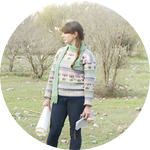Abstract
We carried out an experiment to understand the effect of reintroduced guanacos (Lama guanicoe, the wild relative of llamas) on the growth of the espino tree (Acacia caven), a common tree in the cen...
Spotting the released guanacos!
Please see my blog for an update on the story of the guanacos: https://degusyguanacos.wordpress.com/2017/11/04/pruebas-y-tribulaciones-de-los-guanacos-trials-and-tribulations-of-the-guanacos/Por fa...
Liberación de los guanacos: la historia-- release of the guanacos: the story
Lee la historia aca: https://degusyguanacos.wordpress.com/2017/07/23/liberacion-de-los-guanacos-release-of-the-guanacos/Read the whole story here: https://degusyguanacos.wordpress.com/2017/07/23/li...
Do guanacos eat the fruits of endangered trees? ¿Los guanacos comen las frutas de árboles vulnerables a la extinción?
English below...El guanaco antiguamente tuvo una distribución continua a lo largo de Chile. El efecto que su presencia tenía en el ecosistema resulta una incógnita, más cuando hoy e...
¡Exito! We made it!
Thank you to everyone who donated to make the guanaco release possible! I am really touched that so many people wanted to help us start this next phase of our research, putting conservation in act...
Conociendo los guanacos. Getting to know the guanacos.
Al principio cuando uno empieza a estudiar una especie, puede ser difícil reconocer a individuales. Sin embargo, animales sociales como los guanacos tienen diferencias marcadas de personalidad que...
Are guanacos ecosystem engineers?
One of the biggest surprises during our experiment on guanaco browsing at Altos de Cantillana was the ways that guanacos modified their habitat. We noticed that they made trails, dust baths and du...
In the beginning: how the project started.
Where did the idea of reintroducing guanacos to central Chile come from? It all started when I was doing some field work for my PhD at La Rinconada field station in Chile and a tru...
